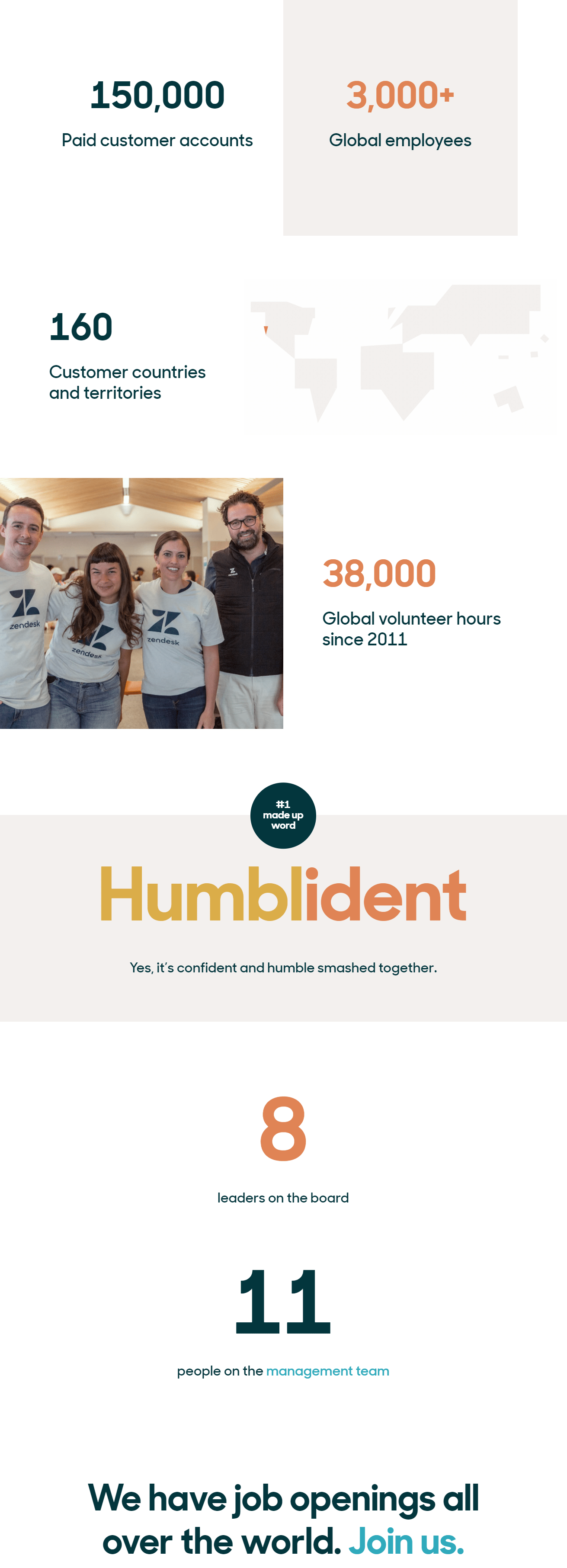
How to Build Trust With Customers Online
Give a free offer to get more leads…
Be active on social media…
Send nurturing emails to get leads closer to the sale…
You’ve got to admit it. We are regularly bombarded with all these marketing tactics on how to get more people into our sales pipeline.
Some of them are long complicated processes that create more confusion than clarity. But you know what we’re really trying to accomplish here? We’re building trust.
Something that we naturally do in our daily lives. So we should all be experts at it, right?
But, no!
We’re so used to face-to-face interaction that selling online can be a challenge. I don’t blame you. Building trust online is a difficult world to navigate.
But if you want loyal customers who not only buy from you but tell others about you, too. Then you have to get their trust.

Whether you own an ecommerce store, a lead generation site or an affiliate niche site, trust is essential in making sales and increasing conversions.
And that’s what I’m going to talk about today. We’ll look at:
How to build trust and loyalty online: What you need to know
The internet is a low-trust environment. People think of it as a place where scammers and unreliable businesses can easily set-up shop. Every business is guilty until proven otherwise. For this reason, when you run an online business, you’re fighting an uphill battle trying to earn your target customers’ trust. You’ll have to fight tooth and nail in order for them to lower their defenses.
Think about it. Imagine you’ve never heard of a brand or a website before. Do you go into the site eager to buy from them? No, you don’t. Instead, you enter with caution and with your guard up.
As soon as you land on a website, you immediately make mental calculations if you can trust it or not. Questions fire-up in quick successions:
- Who are the people in this company? And can I trust them?
- Are there any signs that show they won’t rip me off?
- Are their claims believable?
When the answer to these questions do not meet your trust requirements, you leave without a second thought-
So here’s the thing.
If you run a business online, the burden of proof is on you. It’s up to you to prove that you’re a credible and trustworthy business.
That’s the big work and hurdle you have to overcome.
Steps to gaining customer trust and confidence
Trust doesn’t build overnight. Not in real life. Even more so online. But there’s a strategic way to get there.
And this involves the know-like-trust factor. That is, people have to know you first before they’ll like you. When they like you, then trust can begin to develop.
You can put this into practice in three areas of your online marketing strategy:
- On your website
- On other people’s websites
- Throughout the customer journey
How to build trust on your website
The easiest place to build trust is on your website. You’re in control of it. You can easily tweak it to see which elements your customers value more to develop trust.
However, based on what I’ve seen, a lot of businesses fail to maximize the power of their websites when working on building trust. I don’t think it’s for lack of trying. It’s probably because a lot of advice online is still stuck on Internet 1.0, stating that just having a site with lots of visitors is enough for a business to thrive online.
But the internet has moved on. People have become savvier. Competition is high. And trust is low. To rise above the competition, a website needs to have UX/UI in place and a dose of behavioral psychology in practice.
With that said, here’s your crash course on how to build a website that people trust and are eager to buy from the Internet 2.0 way.
1. Website Aesthetics still counts
A beautiful-looking site alone doesn’t cut it. But this doesn’t mean it doesn’t matter.
It is still a prerequisite to building trust in your website online.
A beautiful and professional looking site triggers the halo effect cognitive bias. This is “the idea that what is beautiful is good. In other words, if we find someone physically attractive, we make other positive judgments on their character, unconsciously perceiving them as intelligent, trustworthy, kind, responsible, and successful…”
When something is beautiful, our brain makes a cognitive shortcut and assigns positive attributes to it.
But don’t focus only on eye-candy. Every design element on your site needs to be strategic. It has to make your customers’ experience on your site a flawless and easy one.
“What has this got to do with trust,” you ask.
Here’s what:
People only have limited bandwidth when they’re on your site. Make it difficult for them to find what they want and they will leave. Or worse, question your credibility. It’s not just how it looks that matters. The navigation, layout and content also affect trust.
Improve the user experience on your site and you’ll find that people stay for longer. The more they stay, the more exposure they have to your company. The more exposure, the more they like you. And when they like you, the trust will soon follow.
Let’s assume you already have a good-looking site. But does it also follow UX/UI principles so that customers stay on your site for longer? Here are some questions that you can ask to see if it does.
- Does the website make good use of white space?
- Does it have a strong visual hierarchy?
- Does it have directional cues that guide a person to the goal of the page?
- Is it easy to find other pages on the site?
- Will a visitor know in the first few seconds what the site is about, what he can do there and how to do it?
2. Develop connection using the about us page
You’ve seen the statistics. Most visitors on your site will read your about us page. A study by Ko marketing [PDF] showed that over 52% of visitors read it on any website they visit.
That makes sense.
If you’re trying to decide whether to buy from a business or not, you would like to know who you’re buying from, right? And the about page is the quickest place to know more about the company.
So what does an about page that builds trust look like?
According to the NN Group, the about Us page is where you tell your story, but you tell it succinctly.
Your potential customers are busy. They’ve got a dozen other tabs open. And when they click that link to the about us page, what they want is a quick look so they can form an opinion about your business. And decide if you’re trustworthy or not. They don’t want to spend much time reading about every little thing your company does. So make it short, easily scannable and easy-to-read.
Here are some ideas of things to include on your about page that people like to see:
- What your company stands for
- How you help your customers
- How you’re different from your competitors aka your value proposition
- How you support the community
- What proof you have to support your claims like customer reviews, mentions in the media, important certifications, etc.
Here’s an example from Zendesk. It succinctly gives an idea of what they do (how they help customers)…

…how big their company is (proof)

and the social causes they support.

All written in a fun way.

It’s so short the whole page is less than 400 words long. And yet you get a good idea about the company with only a few hundred words.
3. Make it easy to get in touch with you
The contact page is another oft-visited page on your website. People want to know where you’re based and how to contact you. This way, they know where they can send Liam Neeson in case you fall short on your promise. Just kidding.

In all seriousness, it’s part of the process your visitors take to assess your credibility. They want to make sure you’re not some fly-by-night company that disappears as soon as they send their money.
This means that on your contact information you should include all the different ways they can get in touch with you. This includes your:
- Physical address
- Email address
- Phone number
- Social media channels
- Live chat
- Customer support details
4. Convince using third-party proof
People are more likely to believe what other people say about you than what you say about yourself.
When visitors don’t know much about you, they tend to look to what other people say to verify your claims.
You can use reviews or testimonials not only on product pages or the offers page. Have reviews and testimonials visible throughout your site. The regular appearance of positive reviews about your company or products helps etch the validity of your claims into your potential customers’ minds.
Note: I’ve written about social proof before and how you can use it on your site to increase conversions. If you want to dive deep into it, I suggest you read that as well as another article on how to use customer testimonials on your website to get buyers to take action.
5. Lessen friction and customer anxiety using trust elements
Lastly, use trust elements that show your credibility. These include:
- Trust badges
- Logos from other well-known established companies
- Media mentions
- SSL certificates
- Anti-malware logos
Even more importantly, trust elements include being honest and upfront with your customers about what you can or can’t deliver.
This means:
- Being clear with shipping fees or any other additional fees. For a lot of eCommerce sites, unclear shipping information is one of the top reasons why people don’t check out.
- Including a guarantee. This is a great way to skyrocket trust at this juncture of the customer journey. They’ve decided you are the best option. The next thing they want to know is that there is some kind of guarantee in place in case you don’t deliver on your promise. This takes the risk away from them.
- Having basic trust signals in places like your privacy policy, terms and disclaimers.
How to build trust using third-party Websites
Your own website is a great place to build trust. But a first-time visitor will always ask:
“So what?”
Without knowing you, they’ll err on the side of caution. They know you run the site. You can write whatever the heck you want, whether it’s true or not.
So what do they do?
They check you out on other sites that you don’t control. And they spy on your interactions with other customers on social media sites.
This gives them a more unbiased picture of your business. Here’s what you can do to help customers know more about you on these third-party websites.
1. Be present on review sites
Look at review sites as your marketing partner.
Sure. Some of these sites have been embroiled in some form of review biases and scandals. But nonetheless, they help in getting potential customers know more about you.
So what do you do?
Think of them as another marketing outlet. Be present. Respond to reviewers or answer any questions people have.
When you get positive reviews, respond if possible.
But what if you get a negative review? What do you do then?
First of all, a negative review doesn’t mean it’s the end of your business.
Customers are not stupid. They know that negative reviews are inevitable. Most customers will not base their trust in you on only one or two negative reviews.
As long as you have more positive reviews and the negative review doesn’t look like it’s a recurring problem, you should not worry too much about it.
Of course, it’s never easy to read a negative comment about yourself or about your company. Here’s my take on this. If the negative review has some element of truth in it, then apologize. Answer it with tact and respect, explaining your side of the story.
If it is completely fabricated, then many review sites will have ways for you to respond to it. Use these channels whenever possible
If you want to know more about how to deal with negative reviews, start with this Search Engine Journal article.
2. Leverage the power of social media
You don’t have to be on all the social media sites. If you only have the resources to be active on one site, then make the best of your presence there.
Think of it as a way to reach more people. To get the attention of potential customers and bring them into your circle of influence. The more you become active on social media, the more attention you get. Attention leads to trust.
So what should you post on Social Media to develop trust in your brand? I suggest posting different things like:
- Company news
- Behind-the-scenes product development
- Feature the people who work in your company in a relatable and fun way
- Quick tips and tutorials to promote expertise
- Customer testimonials and reviews
Just with these 5 topics, no matter how small your company is, you will have more than enough content for social media.
Look. If Anthony Hopkins is on the TikTok train, you have no excuse not to get active on Social Media.
How customer service helps build customer trust and loyalty
You can have a trustworthy-looking website littered with trust signals. You can have a great social media profile. But at the end of the day, what solidifies trust and builds loyal customers is the way you treat people. It all boils down to building relationships. Being true to your word. And giving your customers the product, offer or experience you promised them.
Stray away from this and all your efforts to build trust will have been for nothing.
“Trust takes years to build. Seconds to break. And forever to repair.” – Dhar Mann –
Good customer service means not only looking after the people who have bought from you. But also looking after people who haven’t given you a cent.
Why? Because your customers are always watching. And for them to trust you, they’ll have to see you as someone who looks after his flock. As someone who is on their side no matter what. Whether they give you money or not.
Here are some questions that customers often want to know about a business’s customer support.
- What’s your after-sales like? Do you continue to look after people who’ve already given you their money or do you just leave them to their own devices after they’ve come across a problem?
- What’s your sales process like? Do you just sell or do you give more than you take?
- Are you involved in any social cause?
- Do you help people who come across your site or your social media accounts without expecting anything in return?
The answers to these questions influence the customers’ perception of you. Get these right and your credibility will go up a notch. Customers will lower their defenses and give you their trust.
Recap:
As you can see, building trust and loyalty with customers online is a long process. Sure you can start with having a trustworthy looking website. But to sustain that trust. To get people to keep coming back. To get people to recommend you to their friends, you’ll need to regularly work on it.
- Do it with a trustworthy-looking website that shows your credibility and authority
- Do it by interacting like a human on social media, not like a faceless company
- Do it by looking after your customers, by helping visitors to your site, and basically just being nice to people whether you’re compensated for it or not.
Have all these three things in place, and you’ll have customers who trust your brand, buy your offers, and recommend you to others.








 To get started, please enter your details below
To get started, please enter your details below
0 Comments